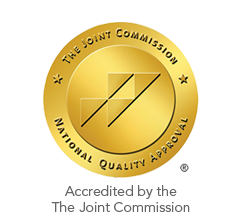Methadone Rehab
Laguna Shores is dedicated to helping each client build a healthy, substance-free life. Learn how our addiction treatment programs in California can help you through every step of recovery, from detox to aftercare.
Despite its benefits, methadone is not without its risks. While designed to be a safer alternative to other opioids, it still holds potential for misuse and addiction. Understanding methadone’s effects and its role in opioid treatment programs can be a crucial step for individuals seeking help or supporting loved ones in their recovery.
Methadone is typically administered as a liquid, tablet, or powder and is strictly regulated to prevent drug abuse. Medical professionals at our Orange County addiction treatment monitor dosages carefully to avoid the risk of dependency, ensuring that the benefits outweigh the potential risks.
How Does Methadone Affect the Brain and Body?
The drug’s effects extend beyond just treating withdrawal symptoms. Methadone can alter mood and perception, potentially leading to feelings of euphoria at higher dosages. This mood-altering effect is one reason some individuals may misuse methadone, seeking the euphoric high rather than following prescribed therapeutic use.
In the body, methadone affects various systems, including respiratory and cardiovascular functions. It slows down bodily processes, posing significant risks if not monitored closely. Understanding these effects helps underscore the importance of professional oversight at our Orange County residential treatment center.
What are the Factors That Influence a Drug’s Half-Life?
The rate at which methadone is cleared from the body affects how long it remains effective and present within the system. This process involves the liver metabolizing the drug, with the resulting compounds being excreted by the kidneys. Factors such as liver function and overall health can influence clearance rates.
The volume of distribution refers to how widely methadone is dispersed across body tissues. This can impact how long the drug stays active and detectable in the system. Individuals with a higher body mass or differing body compositions may experience variations in how methadone is distributed and stored.
Each person’s unique physiology, including age, genetic makeup, and metabolic rate, can influence methadone’s half-life. Additionally, concurrent use of other medications, prescription drugs, or substances can alter methadone metabolism, highlighting the importance of comprehensive medical assessments when using this medication.
Signs and Symptoms of Methadone Addiction
- Drowsiness and Fatigue: Methadone is a depressant, so users may feel extremely sleepy, sluggish, or tired even after a full night’s rest.
- Constricted Pupils: Consistently small or “pinpoint” pupils are common with opioids.
- Sweating: Excessive sweating, even when not physically active or in warm conditions.
- Respiratory Depression: Slowed or shallow breathing can be a sign of opioid intoxication.
- Weight Changes: Sudden weight gain or loss due to changes in metabolism and lifestyle.
- Constipation: Opioids like methadone commonly slow down digestive processes.
- Increased Tolerance and Dosage: Needing higher doses to achieve the same effect, or taking more than prescribed.
- Doctor Shopping: Seeking multiple prescriptions from different doctors or visiting emergency rooms for extra doses.
- Secrecy and Isolation: Hiding methadone use from loved ones or isolating oneself.
- Neglect of Responsibilities: Ignoring personal, social, or professional responsibilities due to methadone use.
- Risky Behaviors: Engaging in dangerous activities while under the influence, or driving while intoxicated.
- Mood Swings: Unpredictable mood changes, including irritability, anger, or depression.
- Anxiety and Restlessness: A sense of anxiety or agitation, especially if methadone levels are low.
- Euphoria or “High” Sensations: Experiencing an intense sense of pleasure or relaxation when taking methadone.
- Cravings: Strong, persistent cravings for methadone.
- Changes in Relationships: Methadone misuse can strain relationships, leading to conflicts or a reduction in social activities.
- Financial Issues: Spending money on methadone beyond prescribed use or other substances.
If someone shows signs of methadone addiction, it’s crucial to seek support from our detox center in Orange County, CA. Treatment options are available, and tailored care can make a significant difference in achieving lasting recovery.
Causes and Risk Factors of Methadone Abuse
- Genetics: A family history of substance use disorders can increase susceptibility to addiction. Genetic factors may play a role in how individuals respond to opioids, including methadone.
- Previous Substance Use: Individuals with a history of opioid or other substance abuse are more vulnerable to developing a methadone dependence.
- Mental Health Conditions: Mental health disorders like depression, anxiety, bipolar disorder, and PTSD are often linked to higher rates of substance abuse. Methadone misuse may start as a way to self-medicate for these conditions.
- Dependence on Pain Relief: Methadone is sometimes prescribed to manage chronic pain, and individuals seeking pain relief may develop a dependence, leading to abuse.
- Cravings and Tolerance: Methadone can produce euphoria in higher doses, which may lead to cravings. Over time, tolerance can build, causing individuals to take more than prescribed to achieve the same effect.
- Coping Mechanisms: Some individuals use methadone as a coping mechanism for stress, trauma, or emotional pain, increasing the likelihood of developing an addiction.
- Access and Availability: Methadone is legally prescribed, which can make it easier to obtain, especially if someone is already in treatment for opioid use disorder. This accessibility can increase the risk of misuse.
- Social and Peer Influence: Individuals with social circles who misuse substances or who come from communities with high rates of opioid misuse may be more likely to abuse methadone.
- History of Trauma: Traumatic experiences, including childhood abuse or neglect, can predispose people to substance use disorders, as they may turn to methadone to escape emotional distress.
- Stress and Life Challenges: Major life changes, such as job loss, relationship issues, or financial problems, can increase vulnerability to substance abuse, as individuals may turn to methadone to relieve stress or emotional discomfort.
- Low Perceived Risk: Methadone is often perceived as safer than illicit opioids since it’s prescribed for treatment. This can lead to underestimating the risk of dependence and overdose.
Understanding these causes and risk factors is essential for prevention and early intervention. Preventive strategies include patient education, careful monitoring of prescriptions, access to mental health support, and programs that promote healthy coping mechanisms. With comprehensive support, treatment programs, and relapse prevention, the risk of methadone abuse can be significantly reduced.
What Are the Side Effects of Methadone Addiction?
In the short term, methadone abuse can cause drowsiness, confusion, and respiratory depression. These effects can impair daily functioning and pose risks, particularly when driving or operating machinery. Additionally, methadone can cause nausea, vomiting, and constipation, which can add to the discomfort and health risks associated with misuse.
Chronic methadone abuse can lead to severe health complications. Long-term use may result in liver damage and hormonal imbalances, affecting overall physical health. Additionally, individuals may experience cognitive decline and emotional disturbances, such as depression or anxiety, which can compound their challenges in seeking recovery.
Methadone’s addictive nature lies in its ability to produce euphoria and alter brain chemistry, similar to other opioids. Over time, the brain’s reward system becomes reliant on these opioid interactions, leading to intense cravings and compulsive use. The psychological and physical dependence that develops can make quitting methadone challenging without professional help.
Dangers of Methadone Abuse
Methadone Withdrawal Symptoms
Withdrawal from methadone can be severe, with uncomfortable withdrawal symptoms such as muscle aches, insomnia, anxiety, and intense cravings. The withdrawal process can be daunting without medical support, often necessitating professional medication-assisted treatment services for safe and effective management.
Drug Overdose
Methadone overdose is a serious risk, particularly when combined with other substances or when individuals consume higher doses than prescribed. Overdose symptoms include shallow breathing, extreme drowsiness, and unconsciousness, requiring immediate medical attention to prevent fatal outcomes.
Methadone and Mental Illness
How Long Does Methadone Stay in Your System?
Methadone Addiction Treatment
Diagnosing methadone addiction requires a thorough assessment by medical professionals, including evaluations of substance use history, physical health, and mental well-being. Tailored treatment plans are developed to address the specific needs of each individual, ensuring the best chance of successful recovery.
Detoxification is the first crucial step in overcoming methadone addiction. During methadone detox, the body clears itself of methadone, and medical supervision helps manage withdrawal symptoms. This phase of medical detox lays the foundation for further treatment and recovery efforts.
Our addiction therapy services in Orange County, CA, including cognitive behavioral therapy (CBT), group therapy, counseling, and holistic approaches, are integral to methadone addiction treatment. These therapies address the root causes of addiction and equip individuals with coping strategies for long-term sobriety.
Overcome Drug Addiction at Laguna Shores Recovery
By choosing our comprehensive methadone rehab center in Dana Point, CA, you can reclaim your life from addiction and build a healthier, brighter future. Contact us today and take the first step toward healing.

 Matthew Beck B.A, M.A, LMFT
Matthew Beck B.A, M.A, LMFT 


